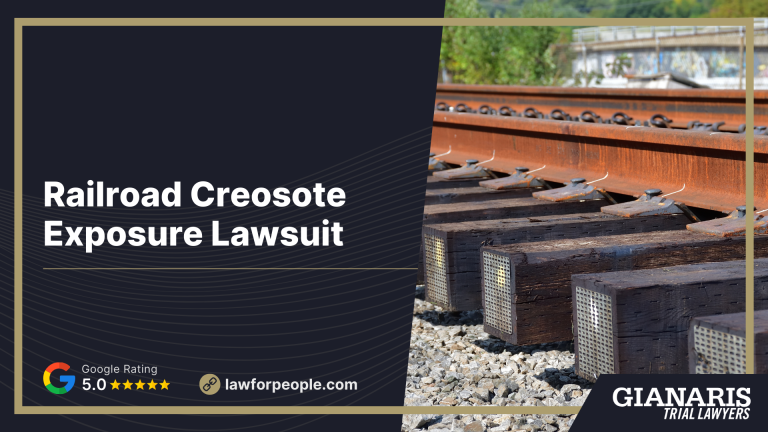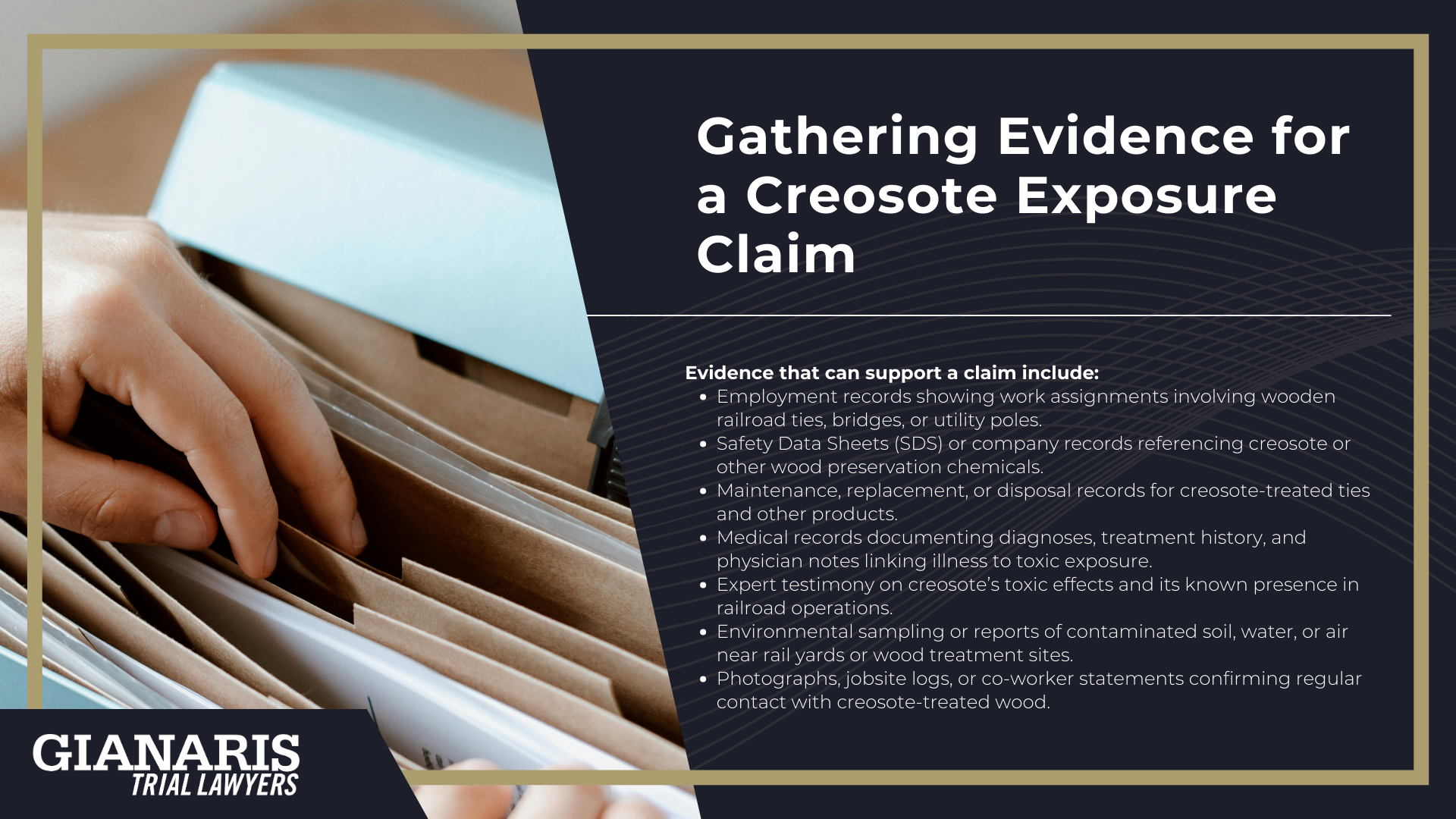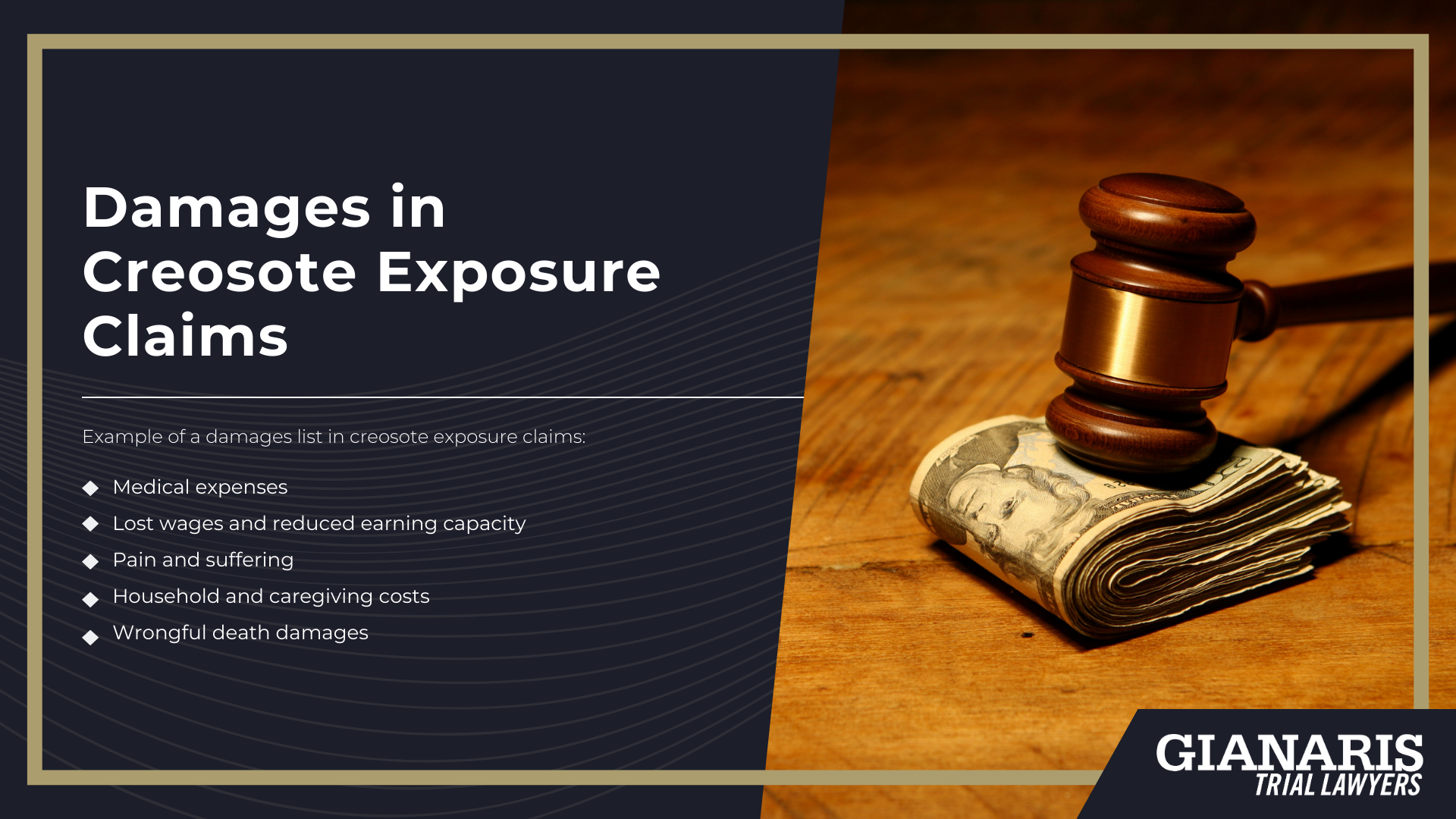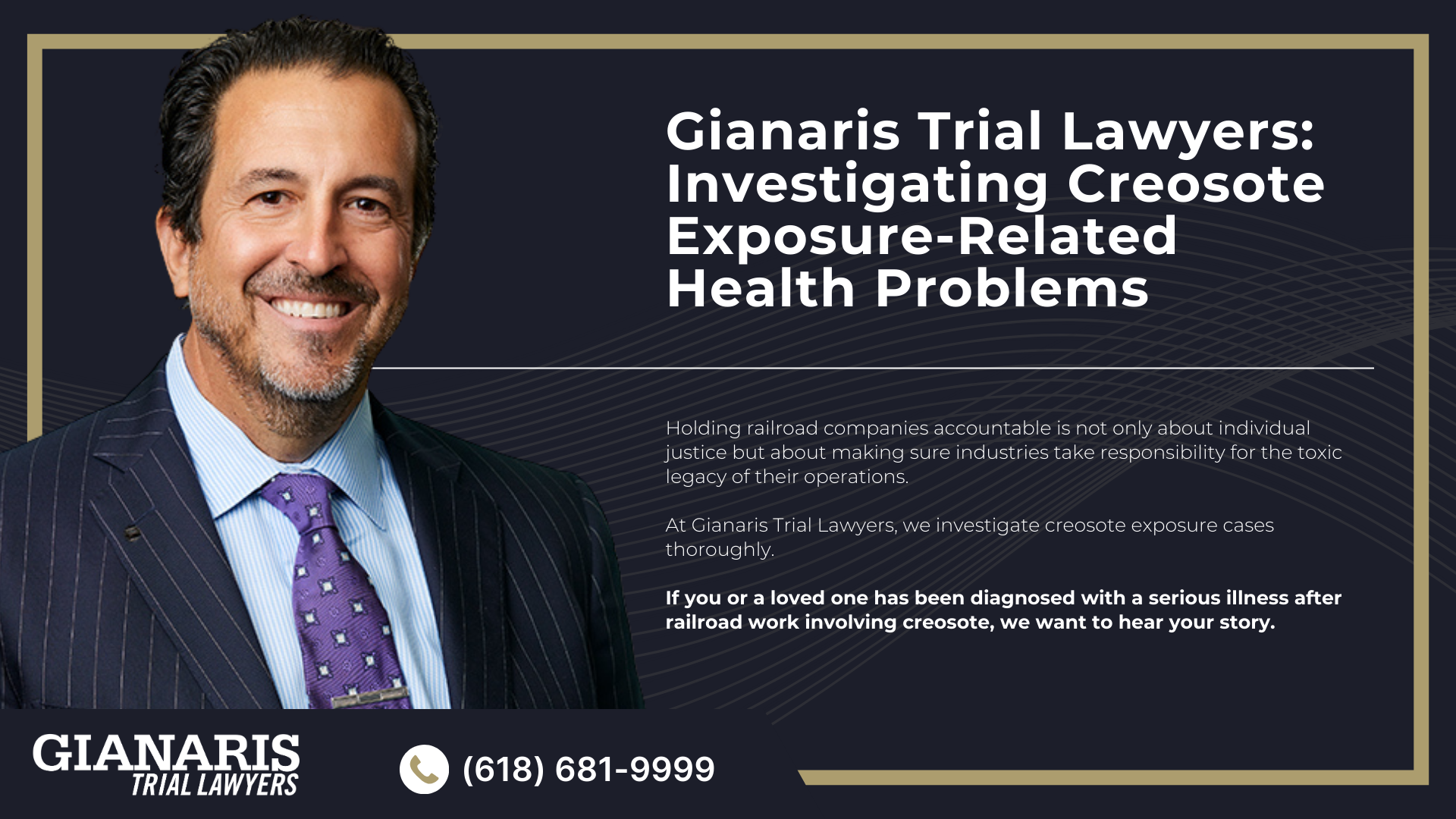Creosote is a wood preservative made by distilling tar (most often coal tar) into a complex mixture rich in polycyclic aromatic hydrocarbons (PAHs) and related toxic chemicals like phenol and cresols; in the U.S., the coal-tar creosote preservative is the variant widely used on wood treated for rail infrastructure.
Railroad applications are extensive: pressure-impregnated wooden railroad ties, bridge timbers for bridges, switch ties, and trackside timbers, with treatment recipes and retentions governed by AWPA standards that specify creosote loading (e.g., ~7 pcf for many tie species).
In practice, “creosote workers” are exposed during tie treating at wood treatment facilities, along the right-of-way during unloading/installation, and later during maintenance and disposal of old ties: tasks that can generate vapors, splashes, and PAH-laden soot.
Creosote formulations may be blended with petroleum oil carriers to improve penetration, which can increase dermal transfer and persistent residue on tools, clothing, and skin.
Biologic monitoring and field studies repeatedly document PAH uptake in workers who assemble or handle creosote-impregnated track components, with urinary 1-hydroxypyrene used as a marker of dose.
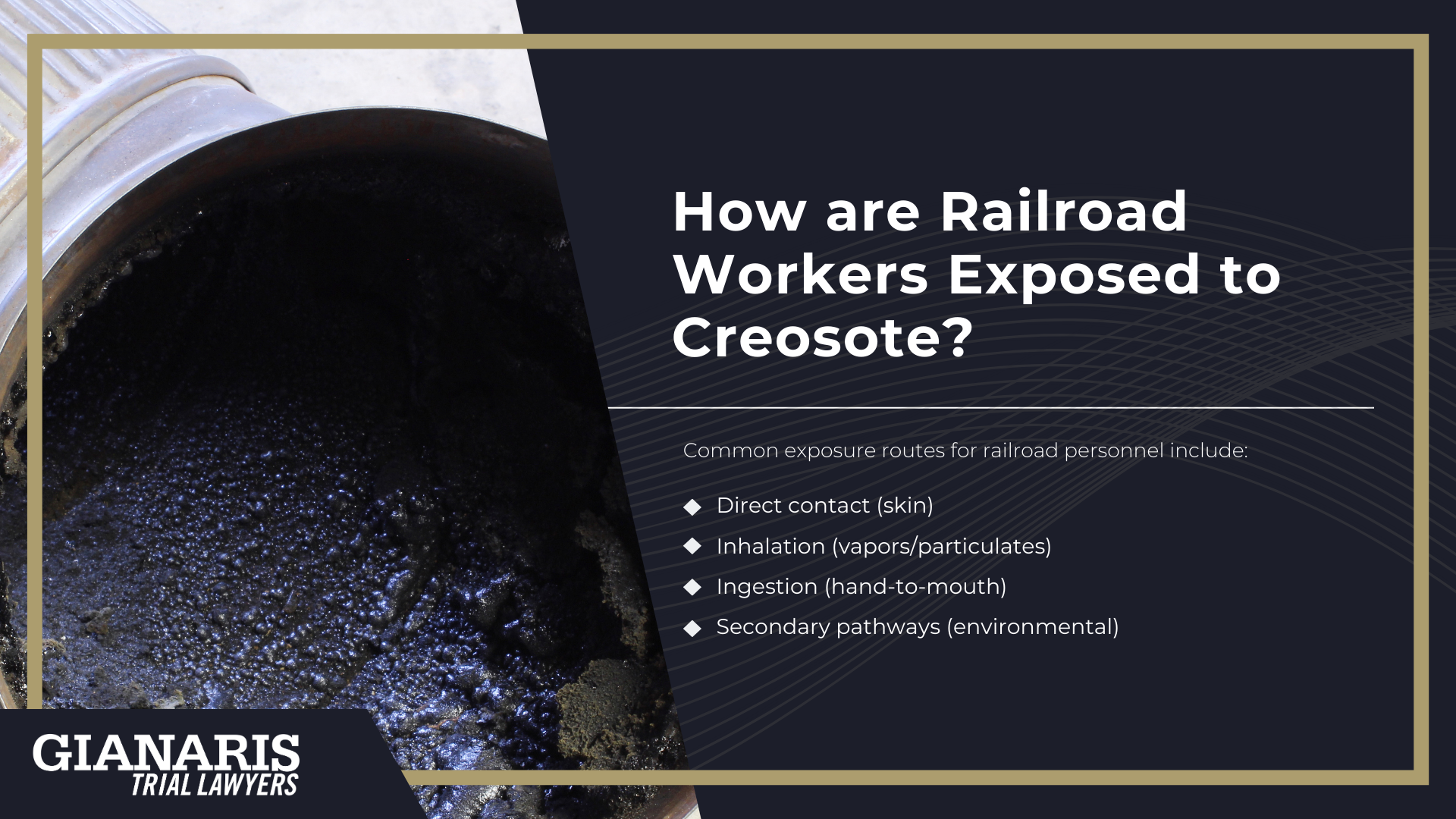
Common exposure routes for railroad personnel include:
- Direct contact (skin): handling wet or freshly treated ties, leaks from bundles, splashes during drilling or cutting, and contact with tie plates/fasteners contaminated with residue—well known causes of dermatitis and severe irritation.
- Inhalation (vapors/particulates): breathing PAH-bearing fumes from warm ties, contaminated ballast dust, or smoke from hot work and incidental burning.
- Ingestion (hand-to-mouth): eating or drinking without washing after handling treated wood (eating food after exposure) or storing food in contaminated cabs/crewsheds.
- Secondary pathways (environmental): runoff and leaching into soil and groundwater near yards or treating sites, potentially leading to drinking water contaminated in adjacent communities.
The U.S. Environmental Protection Agency regulates creosote as a restricted use pesticide and is actively conducting Registration Review of this use; the agency groups creosote with other heavy-duty preservatives due to their potential risks to human health and the environment.
ATSDR’s Toxicological Profile summarizes decades of occupational data showing that dermal and inhalation exposures can be substantial during chronic-duration work and that multiple crafts (track, carpentry, piling/driving) are at risk when handling large amounts of treated wood.
Classic NIOSH health-hazard evaluations likewise describe phototoxic dermatitis, folliculitis, and burns from direct contact, reinforcing the need for upgraded hygiene and PPE controls on tie crews.
Scientific risk assessments and cancer classifications draw attention to PAH mixtures in coal-tar products (creosote included) as drivers of long-term carcinogenicity, while also noting irritation and systemic toxicity at high concentrations in field settings.
Although products labeled as beechwood creosote or natural creosote bush resin exist, the railroad-relevant hazard is overwhelmingly the coal-tar formulation used to protect wood in ties, bridge timbers, and other woods used outdoors.
Industry statistics explain why railroads still rely on creosote (performance and service life), but that same durability means residues persist on materials and equipment, prolonging worker contact over decades of maintenance cycles.
Health Problems Linked to Creosote Exposure
Railroad workers and others exposed to creosote may experience a range of serious health effects.
Exposure can result in a persistent rash or severe irritation, and even chemical burns to the skin and eyes, especially following direct contact with high concentrations of creosote vapors or liquids.
According to the Agency for Toxic Substances and Disease Registry, brief exposure to large amounts can lead to skin irritation, eye burns, and in extreme cases, mental confusion, neurological effects, kidney or liver problems, unconsciousness, and even death.
Studies also show that prolonged exposure can increase the risk of skin and scrotal cancers, particularly among long-term workers handling coal tar creosote.
Although health risks for the general public living near creosote-treated wood facilities are typically lower, vulnerable populations may still face increased risk from contaminated air, soil, or water.
Creosote’s systemic toxicity (affecting organs like the liver and nervous system) displays why preventive measures and legal accountability are vital.
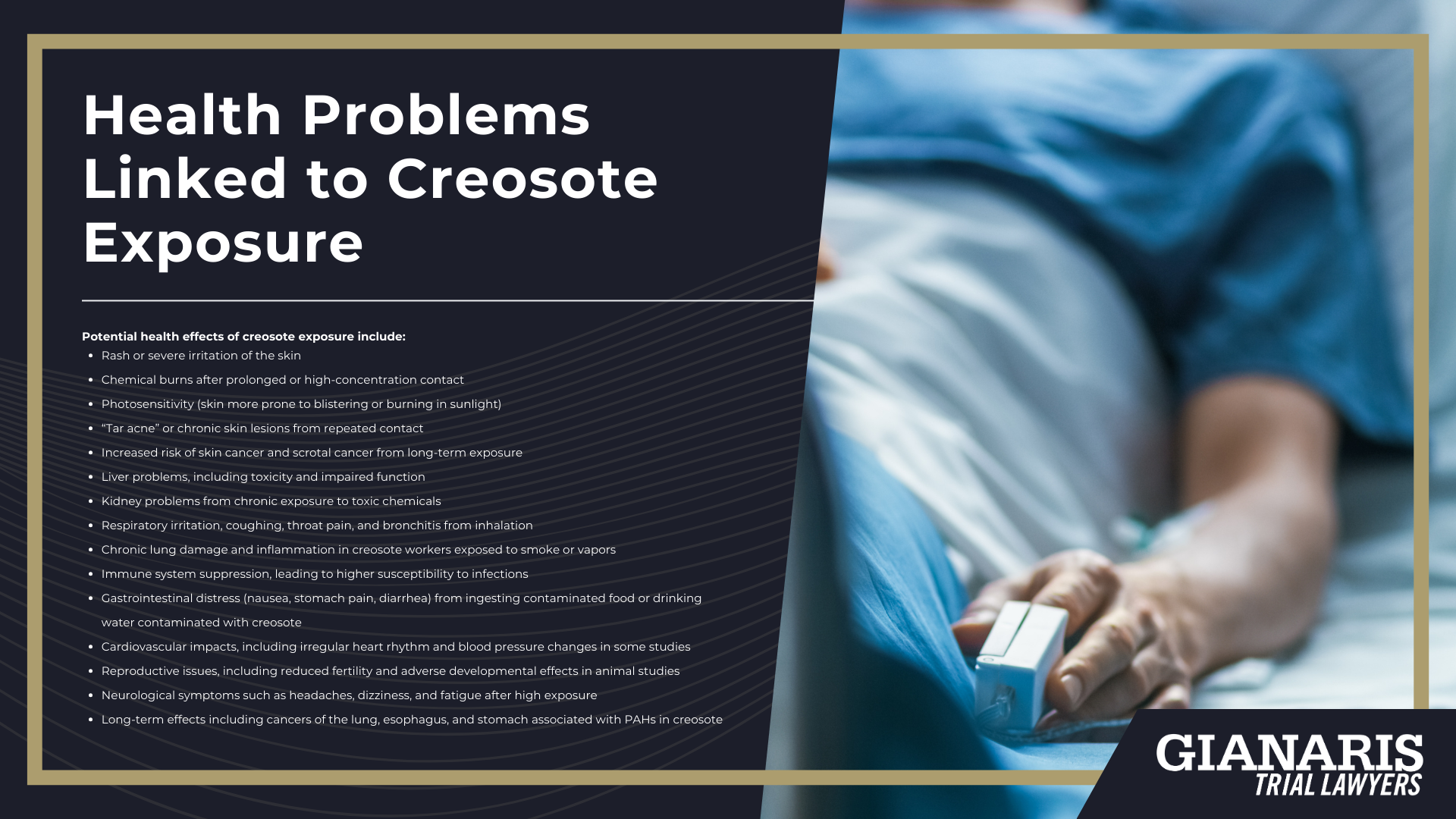
Potential health effects of creosote exposure include:
- Rash or severe irritation of the skin
- Chemical burns after prolonged or high-concentration contact
- Photosensitivity (skin more prone to blistering or burning in sunlight)
- “Tar acne” or chronic skin lesions from repeated contact
- Increased risk of skin cancer and scrotal cancer from long-term exposure
- Liver problems, including toxicity and impaired function
- Kidney problems from chronic exposure to toxic chemicals
- Respiratory irritation, coughing, throat pain, and bronchitis from inhalation
- Chronic lung damage and inflammation in creosote workers exposed to smoke or vapors
- Immune system suppression, leading to higher susceptibility to infections
- Gastrointestinal distress (nausea, stomach pain, diarrhea) from ingesting contaminated food or drinking water contaminated with creosote
- Cardiovascular impacts, including irregular heart rhythm and blood pressure changes in some studies
- Reproductive issues, including reduced fertility and adverse developmental effects in animal studies
- Neurological symptoms such as headaches, dizziness, and fatigue after high exposure
- Long-term effects including cancers of the lung, esophagus, and stomach associated with PAHs in creosote
What Jobs in the Railroad Industry Face the Highest Risk of Creosote Exposure?
Railroad work often involves direct interaction with creosote-treated wood, making some roles far more vulnerable to exposure than others.
Workers in these positions handle, cut, replace, or dispose of wooden railroad ties, bridge timbers, and other materials soaked in creosote preservatives.
Prolonged contact, especially without protective gear, can increase the risk of both acute irritation and long-term health complications.
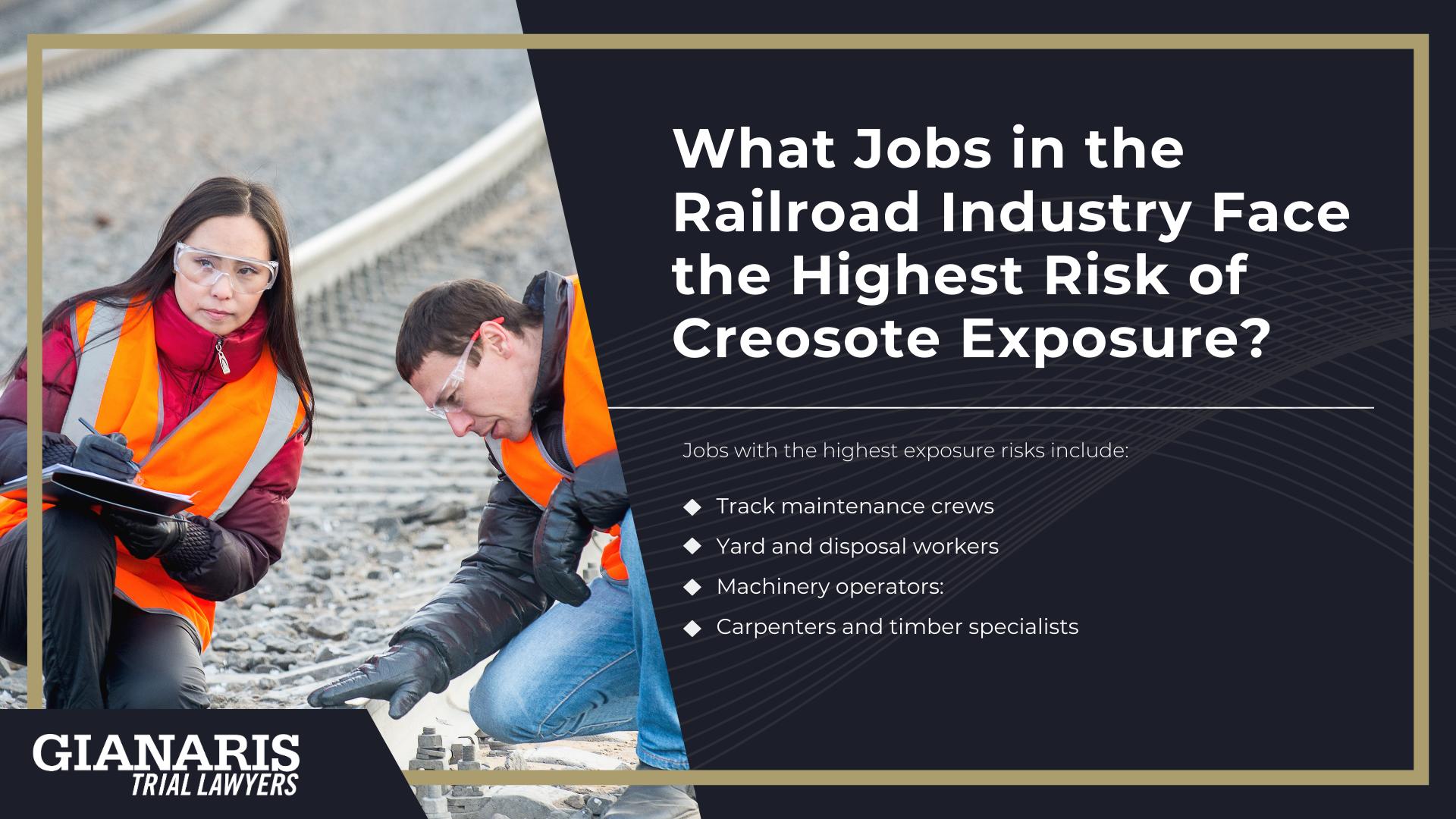
Jobs with the highest exposure risks include:
- Track maintenance crews: Frequently handle old ties, apply new creosote-treated ones, and may cut or saw through soaked wood.
- Bridge and structural teams: Exposed when repairing or replacing creosote-treated timbers in trestles and bridges.
- Yard and disposal workers: Deal with stockpiles of discarded ties and timbers, where creosote residues remain concentrated.
- Machinery operators: Risk exposure to creosote smoke or dust when equipment disturbs preserved wood during construction or demolition.
- Carpenters and timber specialists: Involved in cutting, shaping, or fitting creosote-treated wood, which can release toxic vapors and particulates.

